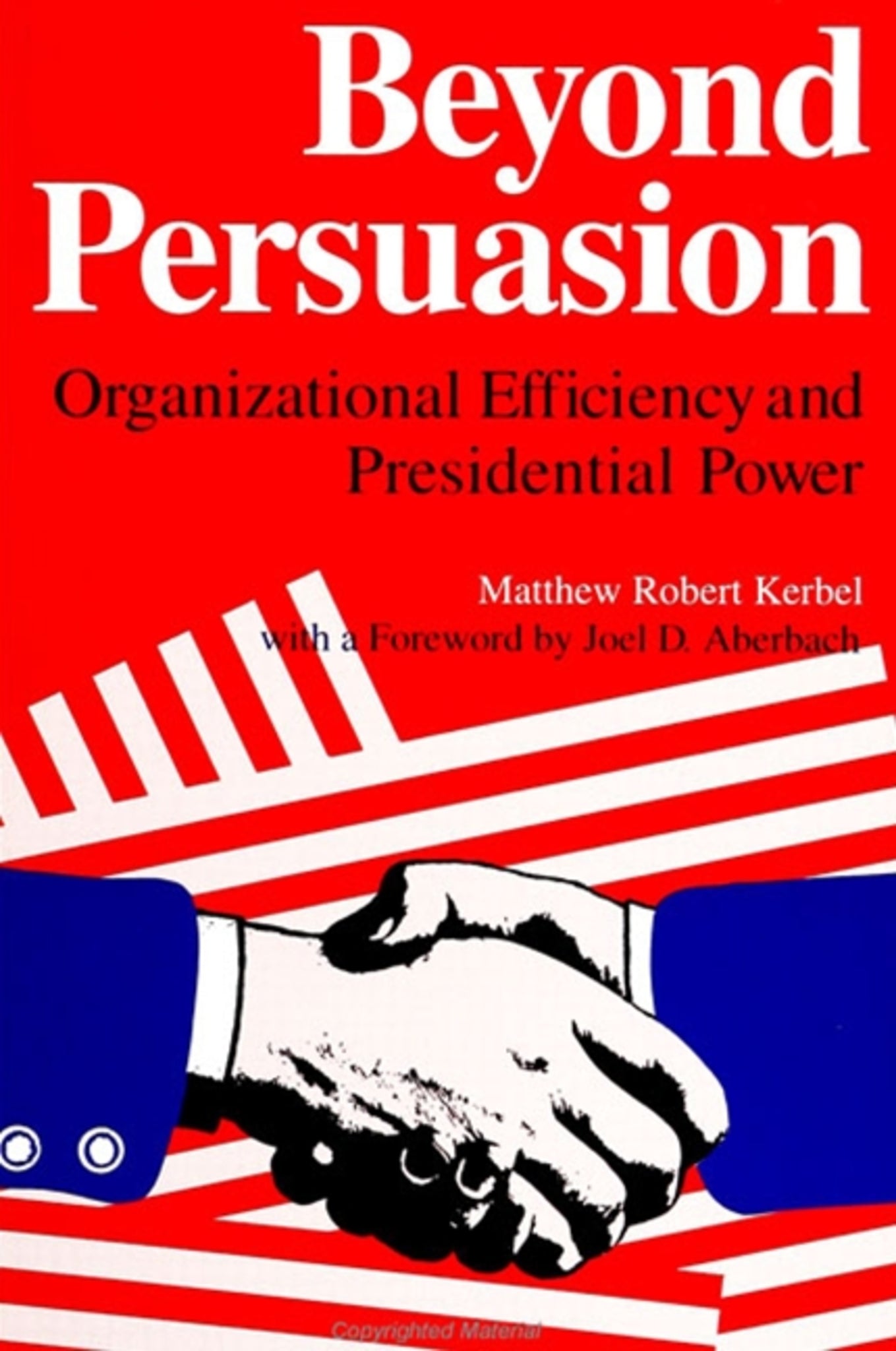We're sorry. An error has occurred
Please cancel or retry.
Beyond Persuasion

Some error occured while loading the Quick View. Please close the Quick View and try reloading the page.
Couldn't load pickup availability
- Format:
-
19 September 1991

Beyond Persuasion is the first systematic, multi-administration study of presidential power and influence. Moving beyond Richard Neustadt's Presidential Power, this book offers a model of presidential power that incorporates personal bargaining effectiveness with the structural imperative of efficient White House organization. Drawing upon a systematic analysis of presidents from Johnson to Reagan, Kerbel finds common patterns of organizational structure and bargaining behavior in their successful domestic policy initiatives. The path to power is detailed through comparative insights on the Carter and Reagan administrations, which prove to be remarkably similar in critical respects despite popular perceptions to the contrary. Kerbel then considers the relative importance of presidential behavior to contextual factors beyond the president's control, offering insight into the way changes in economic and political conditions have hampered or improved recent presidential efforts, despite presidential attempts to organize and persuade. Analysis includes the first year of the Bush administration, and the possibilities for power in the contemporary presidency are discussed.


"This book takes a difficult and controversial topic and explores it with a new richness and texture. It enhances our understanding of the presidency. Kerbel's approach is a novel one, and should be read by every student of the American presidency. I believe that this is a major contribution to the discipline." — John K. White, Catholic University of America
"This book has merit on the basis of its rich comparative insights on the Carter and Reagan administrations alone, but Kerbel goes beyond this to make it an even more attractive work. It will receive wide acclaim for breaking new ground on the linkage between organizational efficiency and leadership effectiveness. The rigor and style of the work are not unlike Richard Fenno and John Kingdon. General concepts like flexibility and inflexibility which are of great importance in the work of James David Barber and others are assessed in a more systematic and meaningful fashion. I am enthusiastic about this work." — Phillip G. Henderson, author of Managing the Presidency
"This is an impressive, well-bounded, thoughtful, articulate, and above all sane approach to presidential leadership. This work offers the reader both useful data and a real 'feel' for the persuasive techniques. It is very well written, and in a friendly style. The book is refreshing for its clearheaded methodology and unpretentious style. Yet it is important, timely, and very useful for other scholars." —Robert Spitzer, State University of New York at Cortland
List of Figures
List of Tables
Foreword
Acknowledgments
Introduction
1. The President and the Rabbit
2. Policy Outcomes: Power and Context
3. Bargaining as Persuasion
4. Domination as Persuasion
5. Organizational Efficiency
6. Access and Other Resources
7. Power and Context
8. Possibilities for Power
Postscript: Applying the Model: The Bush Drug Plan
Appendix A: Intercoder Reliability
Appendix B: Coding
Appendix C: Cases of Success and Failure
Notes
Select Bibliography
Index



